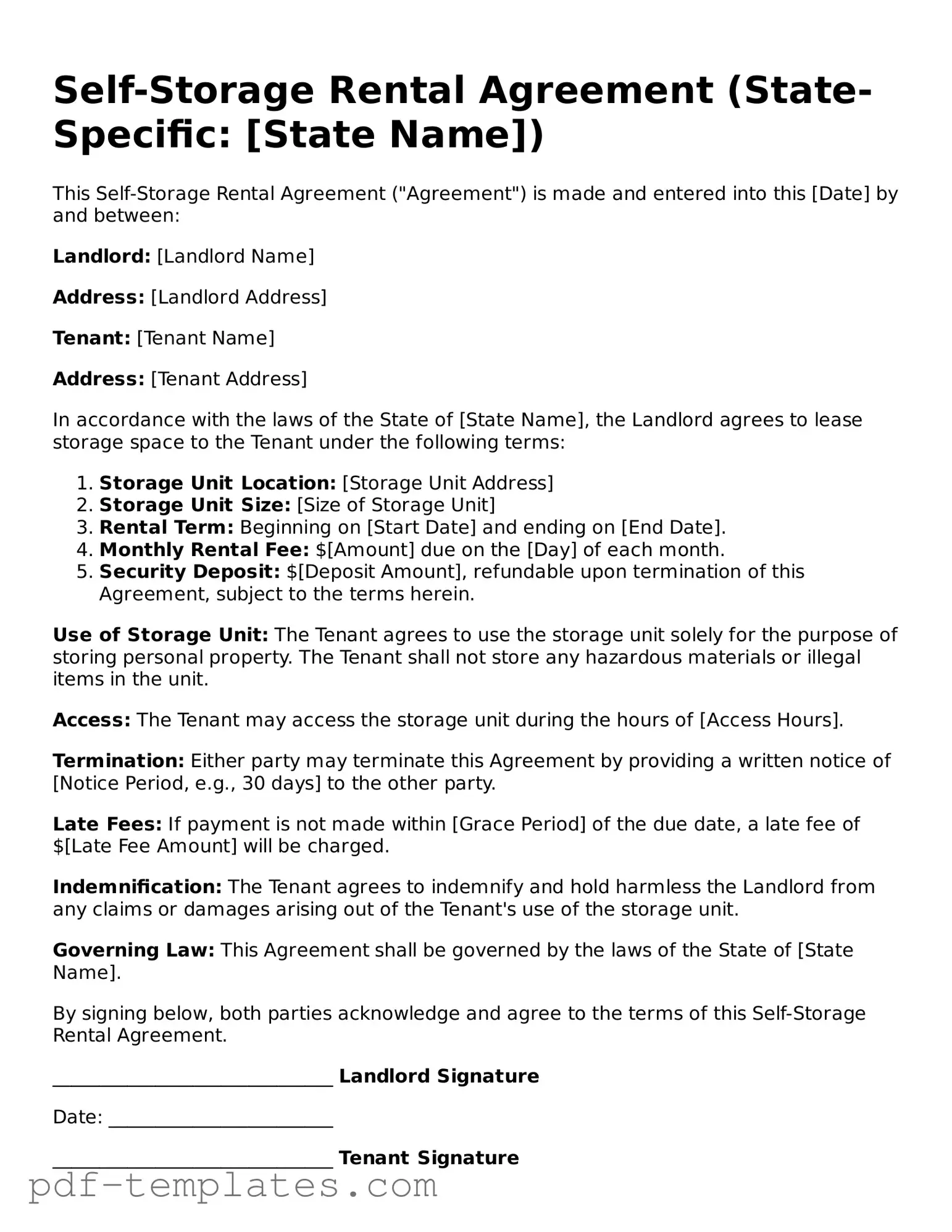The Self-Storage Rental Agreement is similar to a Residential Lease Agreement in that both documents outline the terms and conditions under which a party can occupy a space. Just as a residential lease specifies rent, duration, and responsibilities for maintenance, a self-storage agreement details the rental fee, duration of the rental period, and the obligations of both the storage facility and the renter. Both agreements serve to protect the interests of both parties and ensure a clear understanding of what is expected during the rental period.
Another document closely related to the Self-Storage Rental Agreement is the Commercial Lease Agreement. This type of lease is used for businesses renting space for operations, much like how individuals or businesses rent storage units. Both agreements outline the terms of payment, the length of the lease, and the rights and responsibilities of the tenant and landlord. The main difference lies in the intended use of the space, but the structure and purpose of the agreements are quite similar.
The Vehicle Storage Agreement also shares similarities with the Self-Storage Rental Agreement. This document is specifically tailored for the rental of space to store vehicles, whether they are cars, boats, or RVs. Like the self-storage agreement, it outlines the rental terms, fees, and conditions for access. Both agreements aim to protect the property being stored and clarify the responsibilities of the owner and the storage facility.
A Parking Space Rental Agreement is another document that resembles the Self-Storage Rental Agreement. This agreement governs the rental of a designated parking space, often in urban areas where parking is at a premium. It includes terms such as rental fees, duration, and any restrictions on use, mirroring the structure and intent of a self-storage agreement where space is rented for personal or business use.
Similar to the Self-Storage Rental Agreement, the Equipment Rental Agreement outlines the terms under which equipment is rented. This could include tools, machinery, or other items. Both agreements specify the rental period, fees, and responsibilities for maintenance and damage. They ensure that both parties understand their rights and obligations, whether it’s for storage or equipment use.
The Lease Agreement for a Storage Container is another document that aligns closely with the Self-Storage Rental Agreement. This type of lease is specifically for renting portable storage containers, which can be placed on a property or in a designated area. Like the self-storage agreement, it details the rental terms, fees, and conditions for access, ensuring clarity for both the renter and the rental company.
A Boat Slip Rental Agreement is also comparable to the Self-Storage Rental Agreement. This document governs the rental of space at a marina for docking a boat. Both agreements outline the rental terms, fees, and responsibilities for maintenance and access. They are designed to protect the interests of both the renter and the provider, ensuring that expectations are clear and agreed upon.
The Warehouse Lease Agreement is another document that shares similarities with the Self-Storage Rental Agreement. This agreement is used when businesses rent space in a warehouse for storage purposes. Both agreements specify the rental fee, duration, and the responsibilities of the tenant and landlord. The focus is on storage, but the scale and purpose can differ, with warehouses often being larger and used for commercial purposes.
A Lease Agreement is a legally binding document between a landlord and a tenant. Like the Self-Storage Rental Agreement, it outlines the terms and conditions of renting a property or space. Both agreements specify the duration of the rental period, payment details, and rules governing the use of the property. The purpose is to protect the interests of both parties and ensure clarity around responsibilities and obligations. To learn more about the California Lease Agreement form, you can visit pdftemplates.info/california-lease-agreement-form/.
Lastly, the Mobile Home Lot Rental Agreement is akin to the Self-Storage Rental Agreement in that it governs the rental of a specific space, typically for a mobile home. Both agreements detail the terms of payment, duration, and responsibilities of the renter and the property owner. They provide a framework for the relationship between the two parties, ensuring that everyone understands their rights and obligations.
